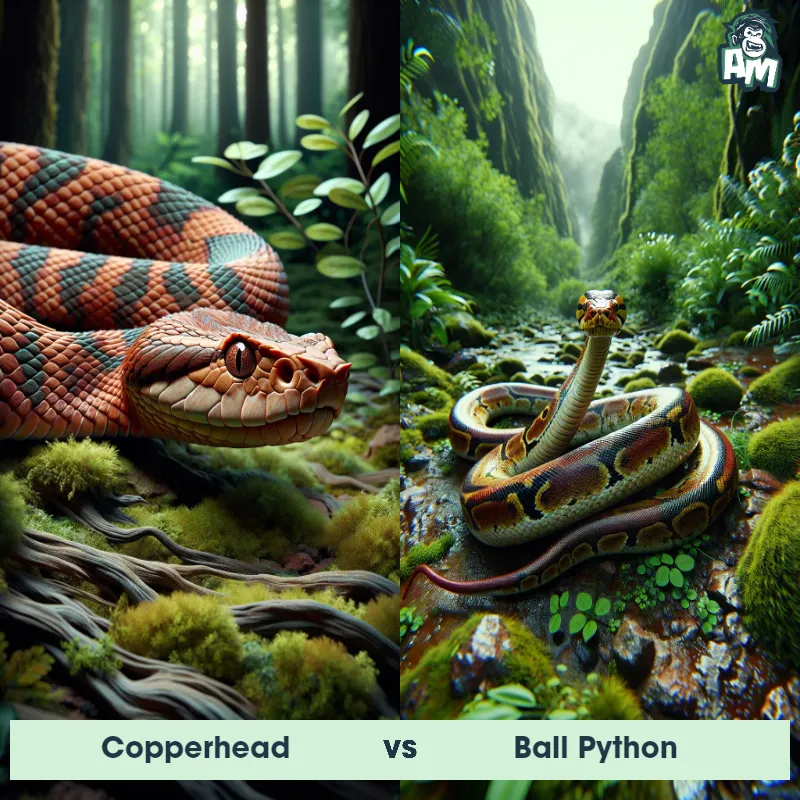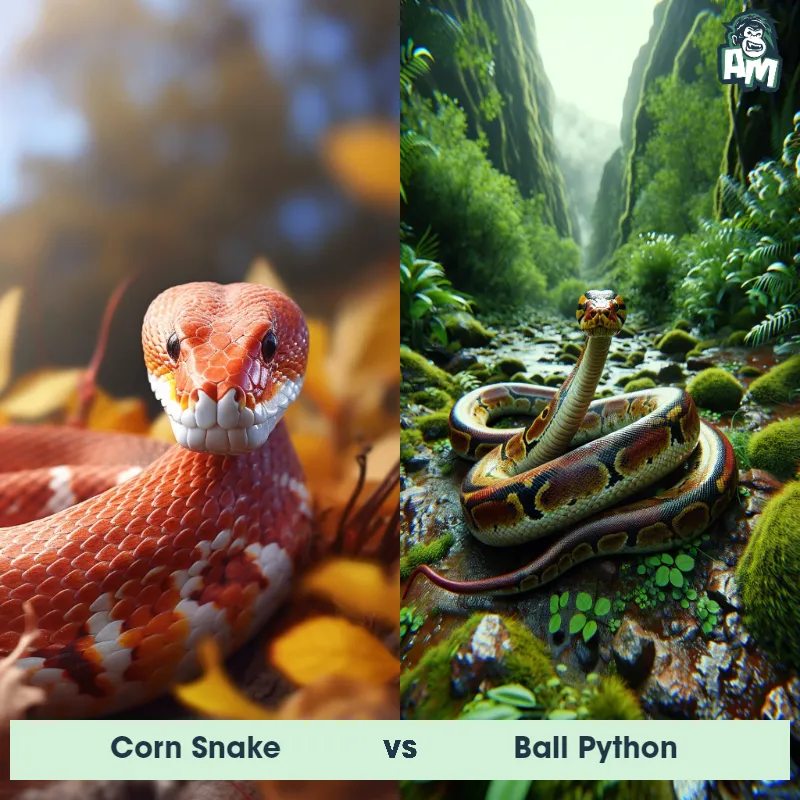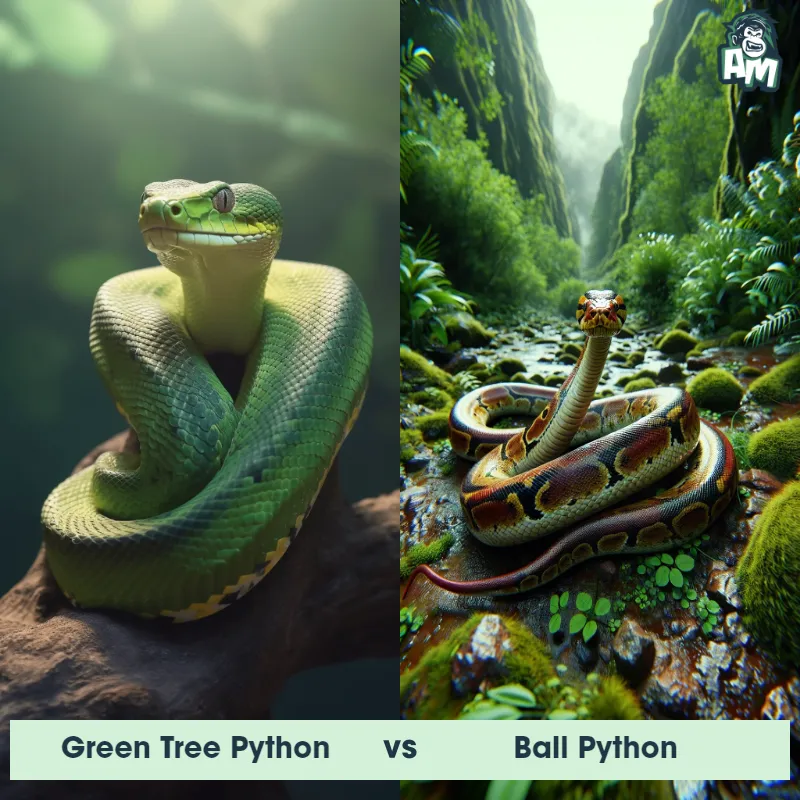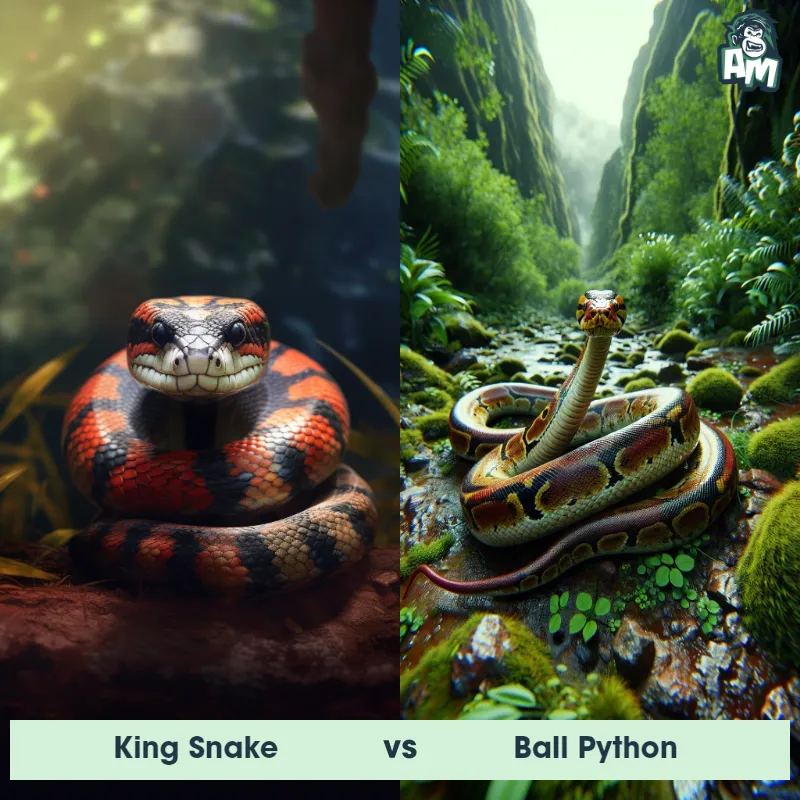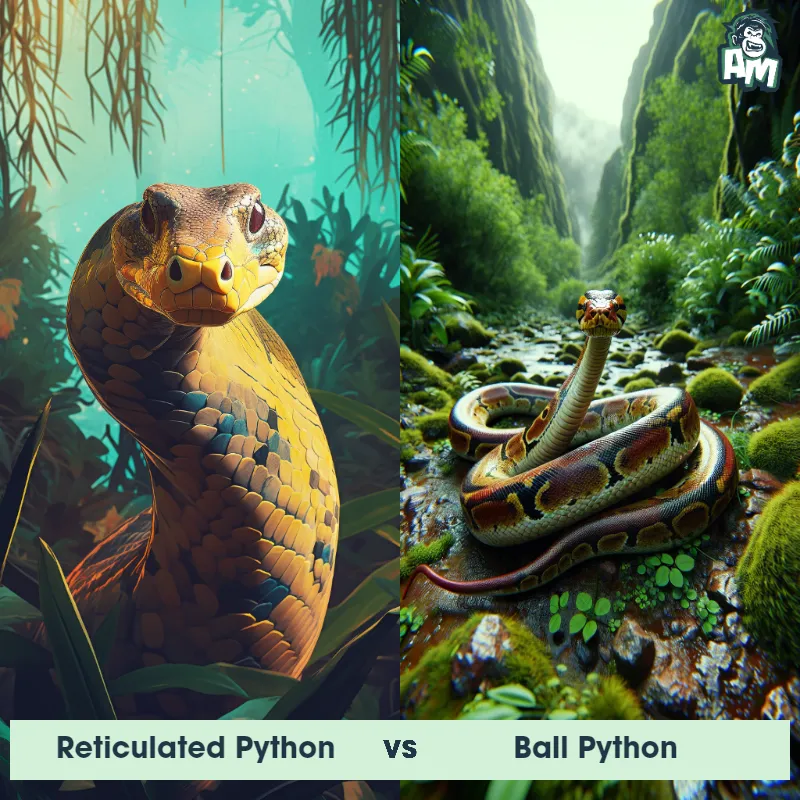The Ball Python
The Ball Python, also known as the Royal Python, is a non-venomous snake native to sub-Saharan Africa. These snakes are characterized by their relatively small size, reaching an average length of 3-5 feet, glossy scales, and a docile temperament. Ball Pythons have a unique ability to curl into a tight ball when threatened, giving them their common name. They come in a variety of colors and patterns, with the most well-known being the black and gold morph. As nocturnal creatures, they navigate their surroundings with heat-sensing pits and prey mainly on small mammals.

| Ball Python | |
|---|---|
| Size | 4-6 feet (1.2-1.8 meters) |
| Weight | 3-5 pounds (1.4-2.3 kilograms) |
| Speed | 1mph (1.6km/h) |
| Key Strength | Constriction and agility |
| Biggest Weakness | Lack of venom or defensive weaponry |
| Scientific Name | Python regius |
| Family | Pythonidae |
| Habitat | Terrestrial |
| Geography | Sub-Saharan Africa |
| Diet | Small mammals, birds, and reptiles |
| Lifespan | 15 years - 30 years |

The Ball Python
The Ball Python, also known as the Royal Python, is a non-venomous snake native to sub-Saharan Africa. These snakes are characterized by their relatively small size, reaching an average length of 3-5 feet, glossy scales, and a docile temperament. Ball Pythons have a unique ability to curl into a tight ball when threatened, giving them their common name. They come in a variety of colors and patterns, with the most well-known being the black and gold morph. As nocturnal creatures, they navigate their surroundings with heat-sensing pits and prey mainly on small mammals.
![[object Object] Gif](https://tenor.com/view/yawn-snake-slither-hiss-animal-gif-17279037.gif)
Fun Fact: A fun fact about the Ball Python is that they are the smallest of all the African pythons, making them a popular choice for snake enthusiasts and beginner snake keepers due to their manageable size.
| Ball Python | |
|---|---|
| Size | 4-6 feet (1.2-1.8 meters) |
| Weight | 3-5 pounds (1.4-2.3 kilograms) |
| Speed | 1mph (1.6km/h) |
| Key Strength | Constriction and agility |
| Biggest Weakness | Lack of venom or defensive weaponry |
| Scientific Name | Python regius |
| Family | Pythonidae |
| Habitat | Terrestrial |
| Geography | Sub-Saharan Africa |
| Diet | Small mammals, birds, and reptiles |
| Lifespan | 15 years - 30 years |
Ball Python Matchups
We use AI to simulate matchups between the Ball Python and other animals. Our simulation considers size, strength, and natural predatory behaviors to determine the most likely outcome.

Can't find the Matchup you want?
Create Your Own MatchupBall Python: Diet, Predators, Aggression, and Defensive Behaviors
What do Ball Pythons eat?
Ball Pythons are carnivores and primarily feed on small mammals such as mice and rats. In captivity, they are usually fed pre-killed rodents of appropriate size. Some may also eat birds or reptiles.
Do Ball Pythons have any predators?
In the wild, Ball Pythons are vulnerable to predation by larger animals such as birds of prey, large mammals, and other snakes. Young pythons are especially at risk of being eaten by predators due to their relatively small size.
Are Ball Pythons aggressive?
Ball Pythons are generally known for their docile nature and are not considered aggressive. However, like any animal, they may exhibit defensive behaviors if they feel threatened or stressed. It is rare for Ball Pythons to display aggressive behavior towards humans.
Do Ball Pythons fight?
Ball Pythons are not known to engage in fights with other snakes of their species or with other animals. They are solitary creatures and prefer to avoid confrontation whenever possible. Instead of fighting, Ball Pythons often rely on their camouflage and ability to hide to avoid conflict.
How do Ball Pythons defend themselves?
Ball Pythons have several methods of defense when faced with threats. These include hiding in burrows or crevices, hissing or puffing up their bodies to appear larger, and using their muscular strength to constrict their bodies around potential threats. They may also bite as a last resort if they feel cornered or in danger.
What is the biggest weakness of Ball Pythons in a fight?
Due to their non-aggressive nature and reliance on avoidance rather than confrontation, Ball Pythons may be at a disadvantage in a physical fight with a larger or more aggressive predator. Their primary defense mechanism of constriction may not be effective against a significantly stronger opponent. Additionally, their slow movement and lack of agility could also pose challenges in a fight.
Fun Fact: Another interesting fact about the Ball Python is their remarkable ability to go without food for extended periods, sometimes up to six months, as they have a slow metabolism. This adaptability enables them to survive in various habitats with fluctuating food availability.
Fun Fact: Ball Pythons are known for their unique defense mechanism called "balling up" – when they feel threatened, they coil their body into a tight ball by tucking their head in the center and wrapping their body around it, providing them protection and making it more challenging for predators to attack.





